What to Pack on a Safari: 21 Things to Bring and 5 to Leave
Safaris are incredible! I’ve been on four in three countries (plus a mini tigerfish fishing trip in Zimbabwe).
I’ll never forget packing for my first safari. Whenever I looked at a blog, I saw khaki cargo pants, green and white shirts, and big boots.
I don’t usually wear these things. Plus, while I’m not going all out and wearing dresses and curated outfits, I am a bit vain and want to feel cute on my trip, especially if I’m going to be in a few pictures.
I found little practical information about what to bring, so I messed up my packing list on my first safari trip. I’ve been perfecting it through the others. I’ll share what I’ve learned. Plus, I’ll include some things you should leave at home.
Some of the links on the page are affiliate links. If you choose to purchase from one of the links, I earn money at no extra cost to you. I’ll only recommend brands I’ve used and love (or an alternative I would book myself). As an Amazon Associate, I earn from qualifying purchases. I always pay for my own travel. I’ll be sure to let you know if that ever changes. If you choose to click through and purchase – thanks so much for the support!
1 – Pack Light Weight Layers, But Don’t Overthink It
I’ve spent waaay too many hours laboring over what to wear on a safari. Every time I go, I realize I’ve been overthinking it. I’ve got a full packing list. And a detailed list of what I’ve worn on my safaris.
The temperatures can change a lot on one game drive. Mornings can be chilly, and when the sun rises, it gets very warm—all in a few hours. Layers are crucial.
Remember that you’ll be sitting in the back of a safari jeep for hours, so comfortable outfits are a must.
If you can sit comfortably and easily shift your layers as you get hot or cold, you’ll be fine!
Pants
I love lightweight pants, my favorites are from prAna. I’m not comfortable in denim, and I don’t find that it handles changes in temperature well, but if you love denim, you do.
PrAna is one of my favorite brands. For safaris, look for the Sretch sion and Rezion fabrics. They hold up well, and they’re great for any outdoor activity.
I love the Halle pants and shorts, and I’ve taken them both on safari. My husband exclusively wears the prAna stretch Zion pants.
I also love my Nomad pants from ExOfficio, but they don’t make them anymore. These from Eddie Bauer seem similar.
I wore shorts on safari some afternoons and took an extra jacket to put over my legs. I’d recommend having an option to cover your legs if you choose to wear shorts on one of your game drives.
You don’t have to wear khaki cargo pants. You can also wear dresses or skirts if that’s comfortable for you.
Maxi skirts always work well for me. There are plenty of options on Amazon.
Tops
Take tank tops and T-shirts for your bottom layer.
Pack layers that are moisture-wicking if you have them. But I got by just fine on every safari with tank tops and t-shirts from Amazon.
Then, take layers. A lightweight button-down shirt is a good option.
Go for it if you want to go all in with cute safari outfits and leopard print. But if you like simple and easy, that’s fine too. Don’t overthink it.
I have my clothing packing list here if you want more details about what I bring.
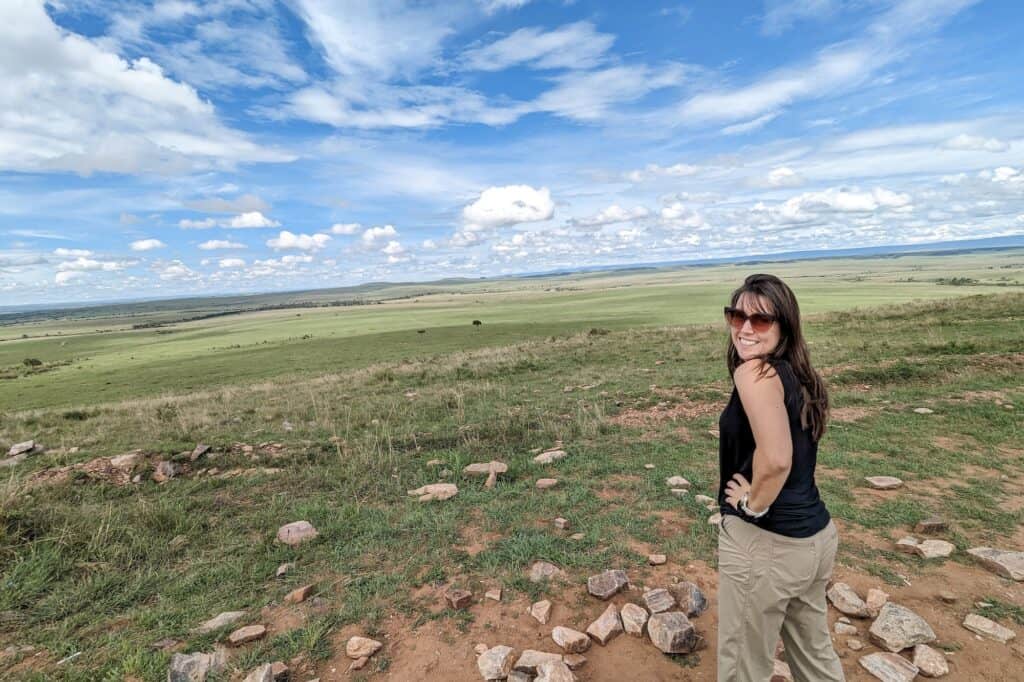
2- Pack Comfortable Shoes
If you’re trekking to see gorillas or doing any other trekking, you may need serious hiking boots. But if you’re taking an average safari, you don’t really need them.
Seriously, no matter what the other blogs say, it’s a lie. I’ve done it in tennis shoes and sandals every time, and it’s been totally fine.
Remember, you’re mostly riding around in a safari vehicle, so you aren’t hiking long distances or touching the ground very often.
My tennis shoes have been adequate on each of my safaris, including the one where I went on a walking safari.
You’ll want closed-toe shoes just because the temperatures are chilly. A warm sock isn’t a bad idea, either.
It’s also a good idea to take some sandals with you when you’re at the property or when the days are especially warm.
But don’t be pressured into big hiking boots. They’re unnecessary unless you’re on a trekking safari.

4- You’ll Likely Need A Soft Sided Suitcase
This may depend on where you are, but it’s worth looking into. Many of the small safari flights don’t allow you to bring hardshell luggage.
If you’re flying to the Masai Mara in Kenya, a soft-sided suitcase is a must. I travel with this Cotopaxi backpack, and it’s been a perfect bag for every safari I’ve been on.
Some safaris, like the one I did in Botswana, allow you to store excess luggage. So, even if you pack a large suitcase for the rest of your trip, you’ll want to be able to pack down to something smaller in some situations.
There are also strict weight limits on what you can bring, and a soft-sided suitcase is typically lighter anyway.
The best thing to do is check with your tour operator and specify any flights you have in the country. Be sure you know what your weight and luggage requirements are.
It’s much easier if you plan instead of trying to scramble when you’re there.
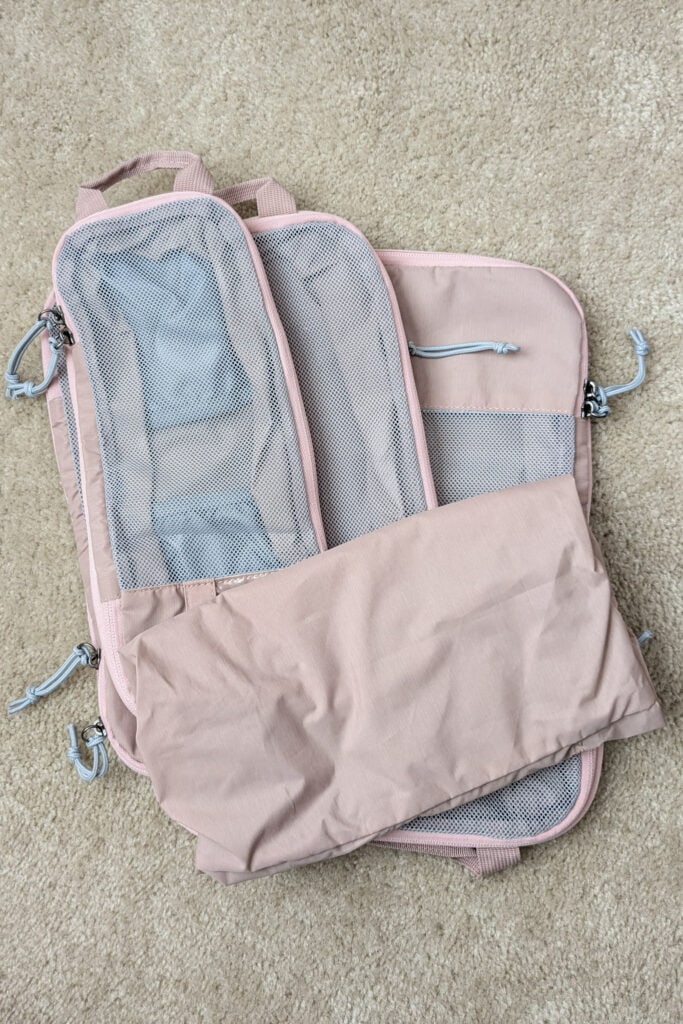
5 – Packing Cubes
Packing cubes always makes packing easier.
But, on a safari, they are a must. Since you may get sweaty or have clothes you’d prefer to wear to dinner, it’s nice to be able to keep them separate.
Plus, if you’re taking a safari where you need to pack down from you’re big bag you can just pack strategically. Then, you just need to pull out the necessary packing cubes and it’s not a scramble to make sure you’ve got what you need.
Going from camp to camp gets easier if you’re moving parks since you don’t have to pull out all of your clothes. Again, just pulling out one packing cube and leaving the rest makes the trip so much easier.
Plus, it’s easier to ensure you don’t accidentally leave something in your room since your whole suitcase isn’t strewn around it. You just have out what you need for that leg of the trip.
It’s a simple thing and doesn’t make a huge difference, but it makes it so much easier.
6- Sunglasses and a Hat
There are some bright days when you’re out on game drives.
You’ll want sunglasses, preferably polarized ones. I like mine from Goodr. They’re great sunglasses, but they’re also cheap enough that I don’t panic about traveling with them.
I’m not a hat wearer because blunt-cut bangs make it hard.
But if you are, a wide-brimmed hat can help protect your face and neck from the sun.
A baseball cap could work, too. But, the safari vehicles can get going fast, so they could fly off. Just be prepared.
7- A Bathing Suit
This one always surprises me. But, check your property, many of them will have a pool. It’s a wonderful way to spend the afternoon between game drives.
The days are hot!
Even though you’re just sitting in a jeep most of the day, it’s still exhausting. A swim in a pool during a hot afternoon can be just what you need.
8- Exofficio Underwear
I swear by my Exofficio underwear. They are great for every trip but an absolute must for a safari.
They are easy to wash in a sink and dry quickly. But, more importantly, they have antimicrobial properties.
Since there’s a good chance you’ll have to use the restroom behind the safari van at some point, these are amazing.
They make me feel so much better about being out in the elements and having to use the restroom. Plus, being able to quickly wash them after makes it easier to pack since you won’t have to bring as much underwear with you.
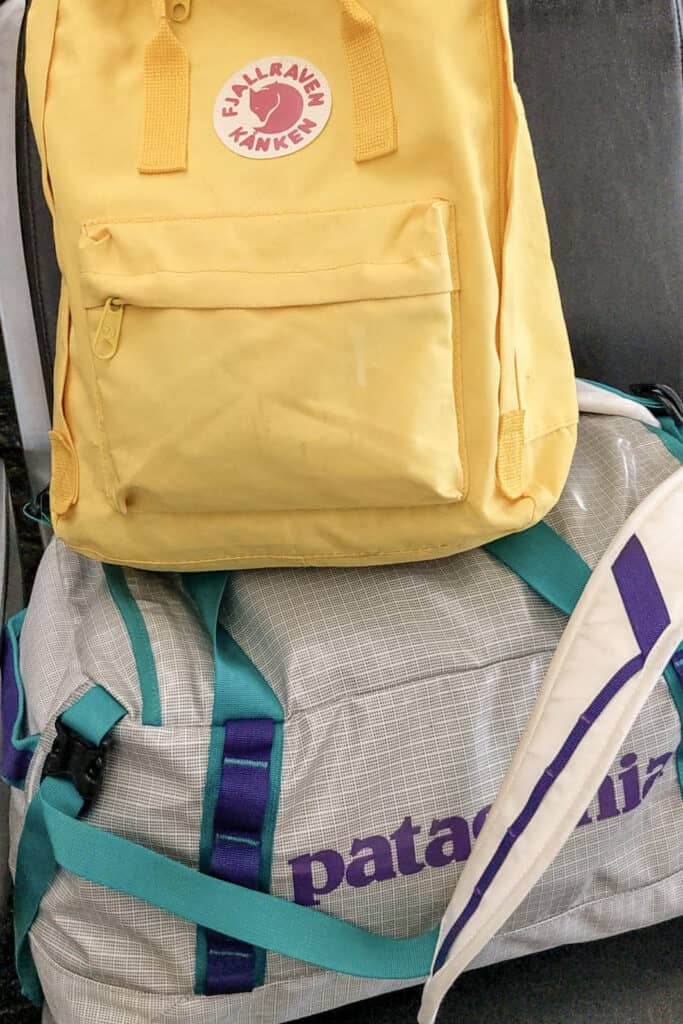
9- A Good Day Pack
Even though you spend most of your time in a safari jeep, a good day pack is still necessary.
You’ll want a place to store your extra layers without using them. Plus, any extra camera gear, snacks, and water. You don’t need much, but sometimes, to help you stay organized will make the trip easier.
My Fjallraven Kanken bag is perfect! It’s the yellow one in the photo above. (The Patagonia bag is another good option for a soft-sided suitcase.)
I also have their camera insert for travel. It works great because I can carry it in my Fjallraven backpack or pull it out during a game drive.
10 – Extra Room in Your Bag
Even if souvenirs never tempt you, you should expect to be tempted in Africa. Little trinkets will be sold at various stops. You can also find spectacular carved animals and paintings.
The artisanry in Africa is next to none.
I’m never tempted to bring home a souvenir, but the safari stops get me every single time.
Whatever bag you pack, leave extra room for what you want to bring home with you.
Many safari lodges include a bit of laundry in the fee. Check with yours and plan to take advantage of it if you can.
11- Hair Ties and Claw Clips
If you have long hair, you’ll have these with you when you travel, but you may not think about taking them on a game drive.
However, most of the game-drive vehicles are open-air, which gives you better viewing of the animals. However, it also leaves you open to some windy drives.
I love a claw clip because I can pull my hair up quickly, and it doesn’t fly around like it would in a ponytail.
Plan to bring what you love to tie your hair back because it will whip around in the worst way if you don’t!
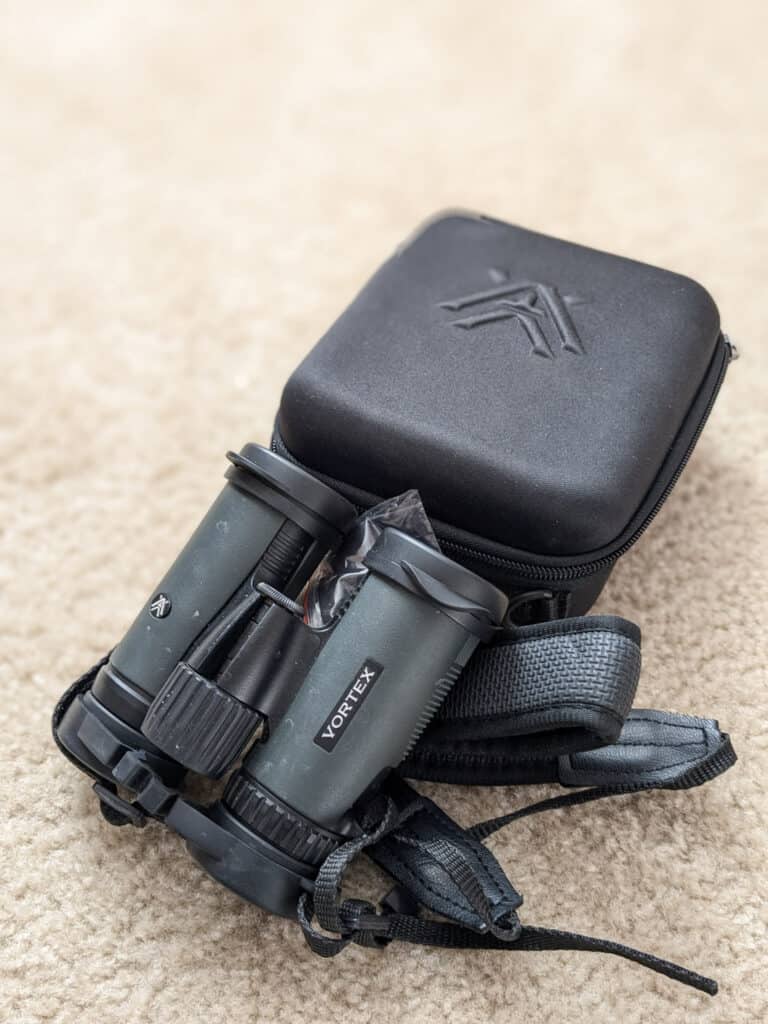
12- Binoculars
Some tour groups will provide binoculars, or the guide may share theirs.
But it’s best to have a pair of your own. Binoculars make a huge difference in the animals you can see and how well you can follow the action.
These have been on every safari trip with me and even other trips. I’ve been pleased with them on every trip.
If you are unfamiliar with binoculars, go to an outdoor store, and someone there can likely give you a few pointers.
Or, look at YouTube for the binoculars you choose. Make sure you know the best way to focus them. Then, practice focusing on things at home so you don’t spend time figuring it out when you’re out on a game drive.
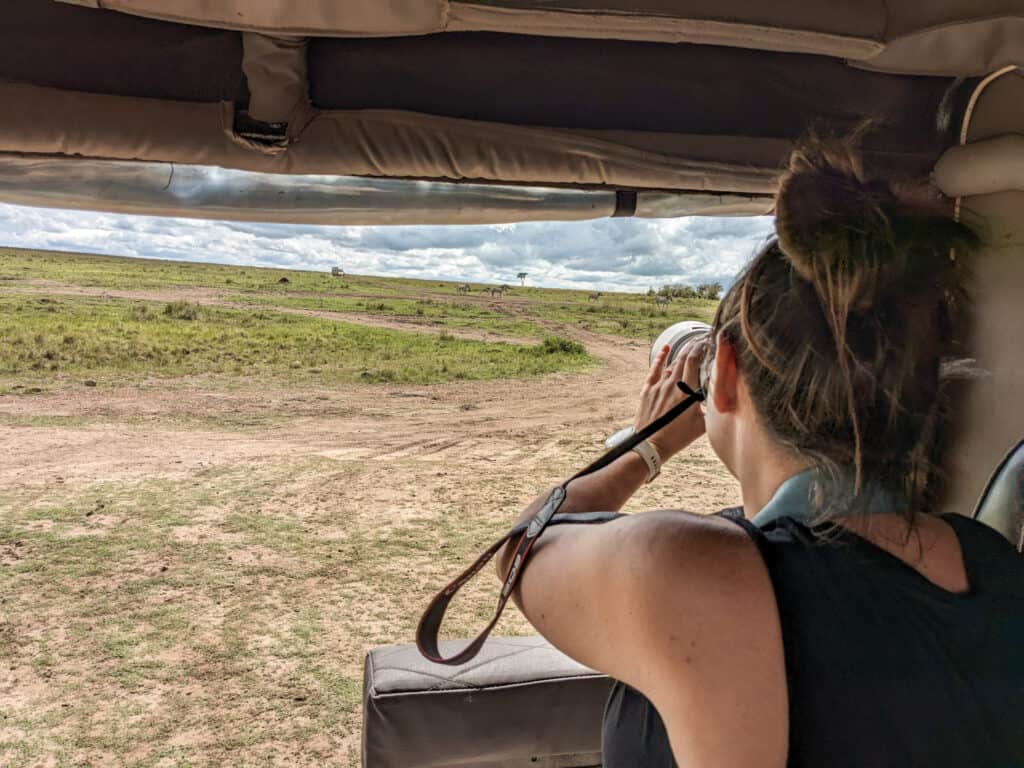
13- A Camera with a Zoom Lens
If you value the photos you come home with, you want to think about the camera kit you bring before you leave. If photos aren’t your priority, you don’t need to worry as much.
But I’ve always brought my camera, and I can tell you others who have been with me regretted their decision not to you.
If you want great pictures, you’ll need a zoom lens. A 70 mm- 200 mm is a good place to start. I’ve found the flexibility to be about right in most situations. If you don’t want to buy a big lens you can rent one.
I use a Nikon Z5 and a Nikkor lens.
14- Medications
Talk to your doctor to learn what vaccinations you need and to ask about malaria medication. I’ve found that it’s best to look for “travel doctors” specifically. They have more knowledge but don’t always work with insurance. Your primary care doctor may be able to get you what you need.
But it’s also a good idea to bring some typical over-the-counter medications when you travel.
- Ibuprofen and acetaminophen
- Anti-diarrheal
- Allergy medicines (including an Epi-Pen if you need one)
- Bandaids
- Neosporin
- Any other daily medications you need
15- Liquid IV and a reusable water bottle
Some safari lodges will provide a reusable bottle for you to use. But, if not, it’s a good idea to bring one of your own.
You don’t want to bring a lot of water with you since you’re mostly sitting in the car driving. But, with dusty roads, it’s not wrong to have some water throughout the day.
Liquid IV is my travel go-to. If I’m dehydrated from flying or if my body responds poorly to a new environment, Liquid IV (or something similar) gives me a quick hydration boost and helps me feel better.
16- Hand Sanitizer
I learned his one this hard way on my first safari! Bring hand sanitizer. You can bring snacks, or sometimes the property provides snacks for you, and you’ll want to be able to sanitize your hands before eating.
It’s also perfect if you need to use the bathroom on a game drive. Since you have to go behind the vehicle, it’s a must-have.
Find a travel-size one, and don’t forget to move it to your day bag for your game drives.
17- A Shewee
On that note, if you need to use the restroom on a game drive, a Shewee can be helpful.
It makes it easier to use the restroom outside and can feel more sanitary. As weird as it sounds, you may need to practice once or twice before you leave on your trip.
18- Sunscreen
The sun is strong on a game drive. Some safari vehicles have a roof, but not all do. Even the covered ones have open sides, and the sun can come in on your arms and neck.
Bring a small sunscreen on your game drives so you can apply as needed.
19- Bug Spray
Honestly, I’ve never had a big problem with bugs on Safari. But I’m always prepared because itchy bug bites are no fun.
Grab a travel-size bug spray to bring with you. If you bring a brand with lots of DEET, don’t use vinyl bags. It can melt it, and it’s not a fun time. DEET is strong, so read it up before you use it.
Alternatively, you can spray your clothes with a bug deterrent before you leave on your trip. Spot test on clothes before you go all in.
20- A Jacket
Temperatures can change greatly on a game drive. Mornings and evenings can be quite chilly, especially if the safari vehicle is open-air and starts moving quickly to reach an animal.
Take a flannel, fleece, or other lightweight jacket that you can easily layer as you need to.
21- Power Bank and Travel Adapter
Bring a small power bank, just in case. If you’re using your phone or camera a lot on your game drive, it may start to run low. This is especially true if you’re doing full-day game drives. Having a small power bank is nice insurance.
Check the country you’re visiting and bring a plug adapter that works for where you’ll be. There aren’t many types, and it’s easy to find with a quick Google search.

Things to Leave
1- A Big Hardshell Suitcase
There are luggage weight and size restrictions for many safari operations. Sometimes, you’ll be required to bring soft-sided suitcases only.
This is usually true when taking a small plane to the park where your lodge is located. These little planes have small storage spaces and can’t carry the weight large planes can.
Check with your safari operator and be sure you’re clear about your requirements.
If you need a soft-sided suitcase, I have some recommendations.
2- Single Use Plastic
Several countries have banned single-use plastics. You won’t be allowed to enter with them, and you can’t throw them away anywhere.
Find reusable options to replace the things you usually bring with you.
I’ve also been able to take a reusable bag through customs and carry it all the way back home. I don’t know if I just got lucky, though.
In the future, I’m only bringing reusable plastic options with me.
3- Camo
In some African countries, camouflage clothing is banned except for the military. So, either do extensive research or leave yours at home.
I’d go with option two. It’s a safer bet. Even in countries where camo isn’t banned, I’ve never seen anyone wearing it.
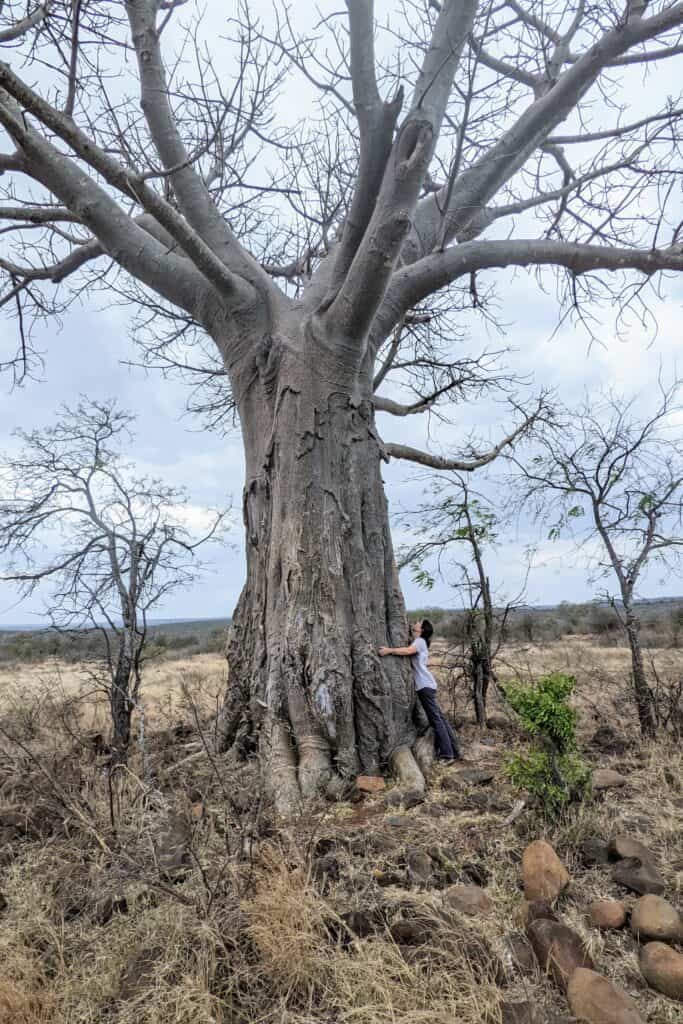
4- Ultra Bright Colors
If you’re in a safari vehicle, this won’t matter as much. People wear whatever they like in the vehicle. But most tour operators do recommend neutral clothing.
Blue, green, and brown are all great. Maybe avoid neon or very bright colors.
If you choose to go on a walking safari, colors will matter. I’ve only seen this offered in South Africa at Kruger. But you’ll need dark clothing, and gray or black is preferable.
If you wear white, they aren’t happy about it. I learned that the hard way.
5- Drones
Drones are banned in many countries and in safari parks. Some won’t even let you bring them in.
Stick with your standard camera or even a GoPro if you want something like that. But leave the drone at home. Or, again, do extensive research to learn the regulations where you’re going.
You’ll Enjoy Your Safari – No Matter What
While it’s important to think about what to pack on a safari so you’re prepared for your experience, you’ll have a fabulous time!
The safaris I’ve been on are my favorite trips. I’ve been more prepared for some than others. But the experience is so incredible that it makes up for anything you may have missed.